August 3rd, 2018
I now present a profound idea that lies at the heart of our failure to understand computers and interactivity: the dichotomy between objects and processes. It can be expressed in simple form:
Is reality a collection of objects or a system of processes?
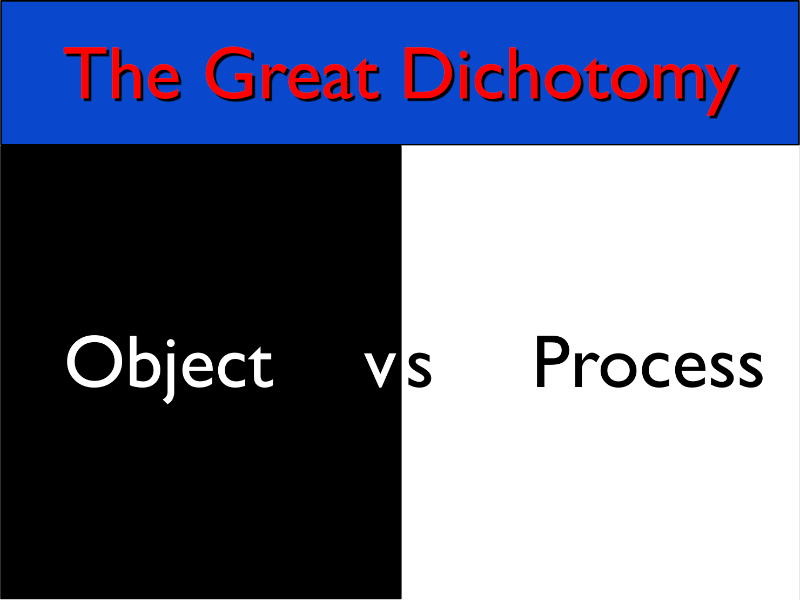
At first glance, this might not look so profound; you may well answer that it’s a mix of both and that’s all there is to say about the matter. But in fact, this dichotomy is so fundamental to reality that it shows up over and over in different guise in a number of wildly different fields.
Linguistics
I begin with linguistics, because the difference here is striking.
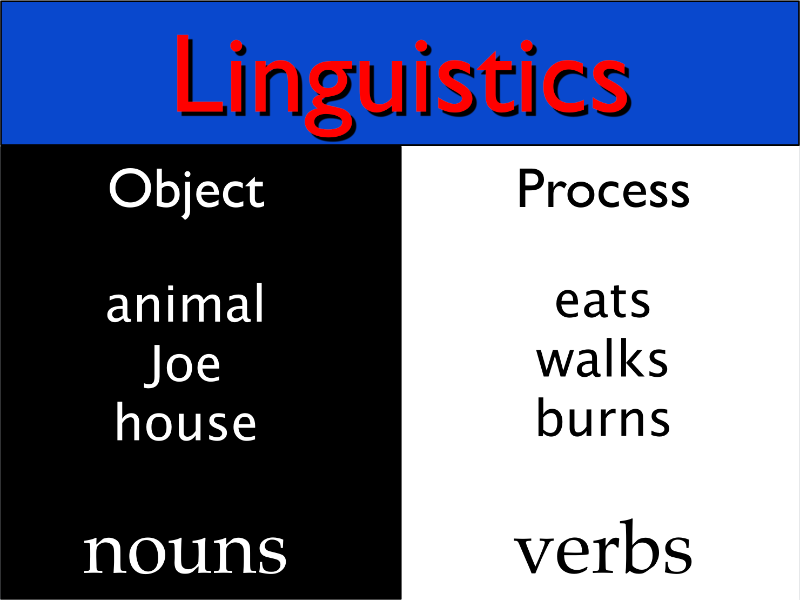
There are two fundamental types of words that show up in every language: nouns and verbs. Nouns specify objects while verbs specify processes. Every sentence in every language requires at least one noun and one verb (although the noun can be implicit, as in “[You] Go!”). You can strip away adjectives, prepositions, adverbs, participles, and all the other accountrements of language and still say something that makes sense, but without nouns and verbs, you cannot say anything that means anything.
Language
Each individual language has two basic structural components: its vocabulary and its grammar. The vocabulary comprises the objects of the language: its words. The grammar consists of the rules that are used to assemble the words into coherent sentences.
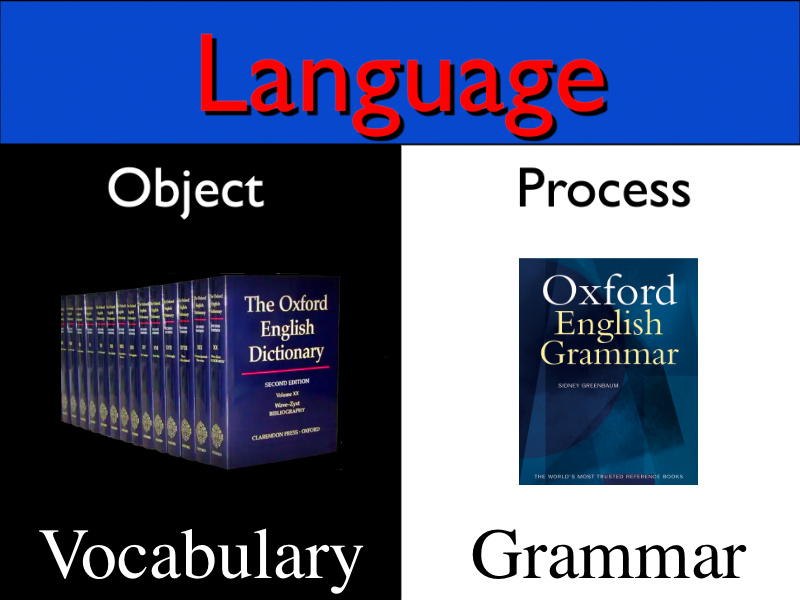
Mathematics
Another simple example is mathematics. If you strip away all the high-falutin’ stuff like calculus and matrices and so forth, the absolute fundamental components of mathematics are numbers and operators like multiplication, addition, subtraction, and division. Numbers are the objects of mathematics; they are static. Operators are processes; they change things. You use mathematics by applying operators to numbers.
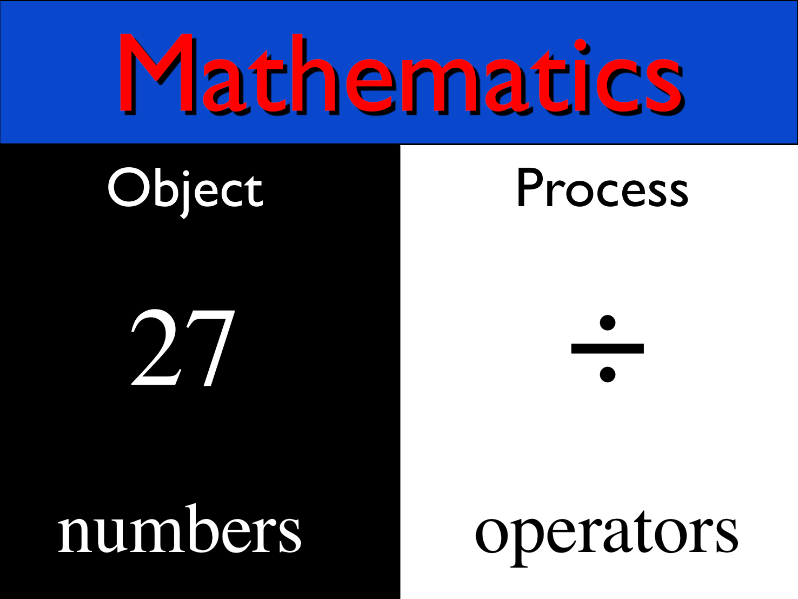
Economics
We see the same basic principle in economics. The two fundamental components of every economy are goods and services.
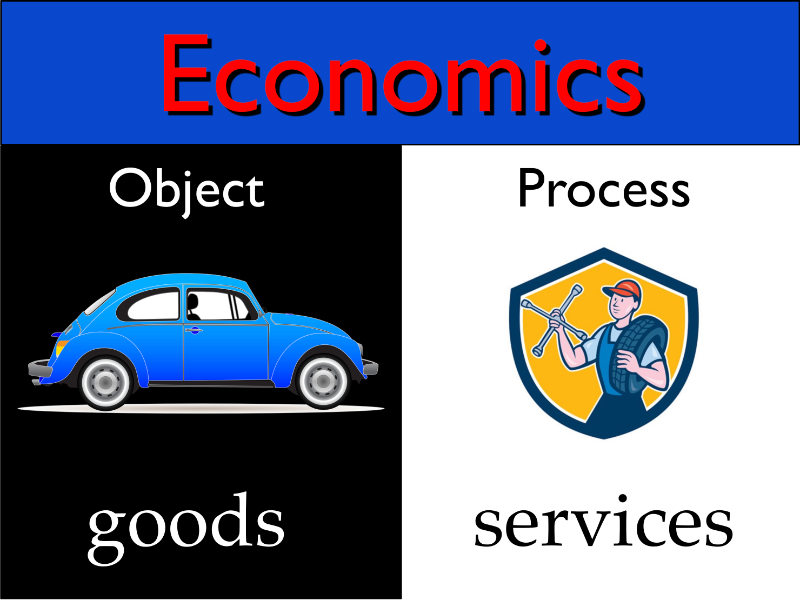
Goods are objects and services are processes. Every economy requires both goods and services to function.
Computers
The fundamental dichotomy shows up in computer science. Every program (except for a few weirdos) requires some form of data along with algorithms for processing the data.
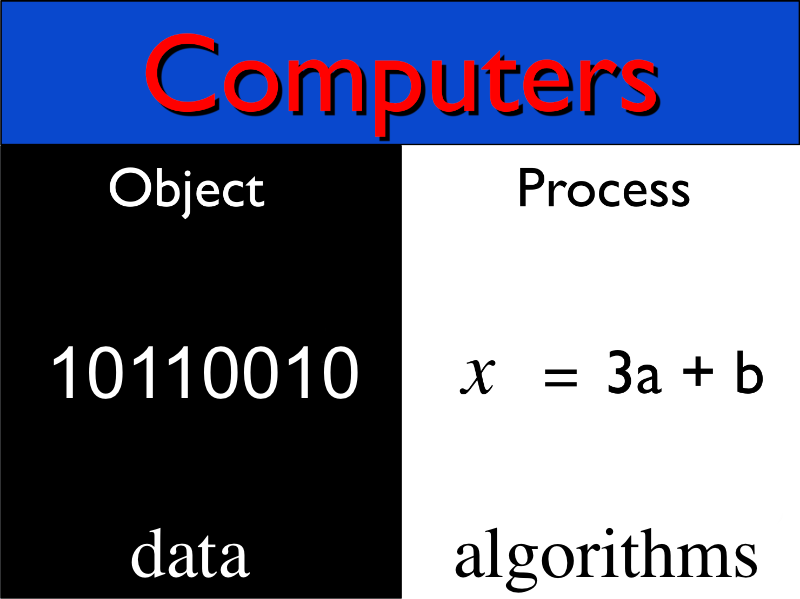
Without data, there’s nothing for the algorithms to work on, and without algorithms, the data just sits there. In computers, data and algorithms together comprise programs.
Physics
Now we’re going to get a little abstract. Classical physics explains the universe in terms of two fundamental components: particles and waves. (I remind natterers that fields are properties of particles, and we’re talking classical physics.)
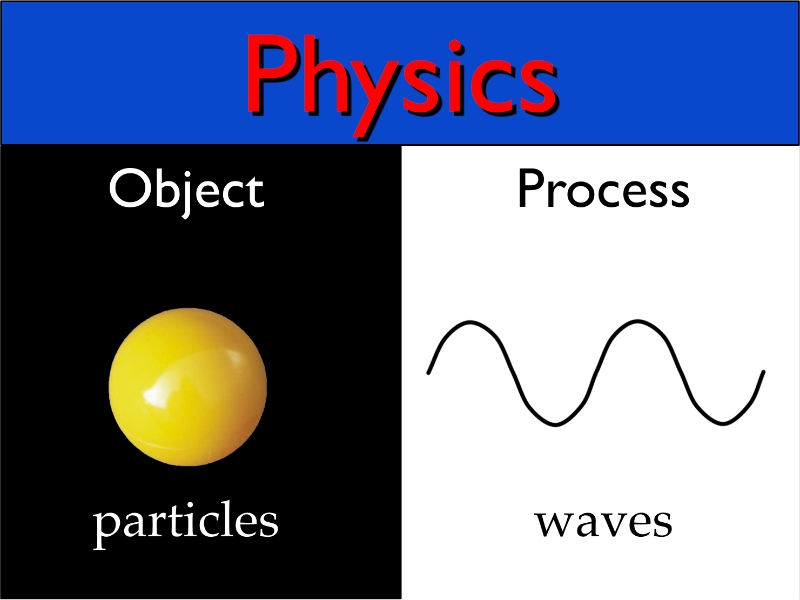
Obviously, particles are objects and waves are processes. But I have a surprise waiting for you a little further down.
Military Science
We can even see the dichotomy between objects and processes in military science.
Every West Point graduate will tell you that there are assets and operations. Assets are the objects of military science: guns, tanks, planes, soldiers, and so on. Operations are the processes of military science: the way that the general moves the assets around.
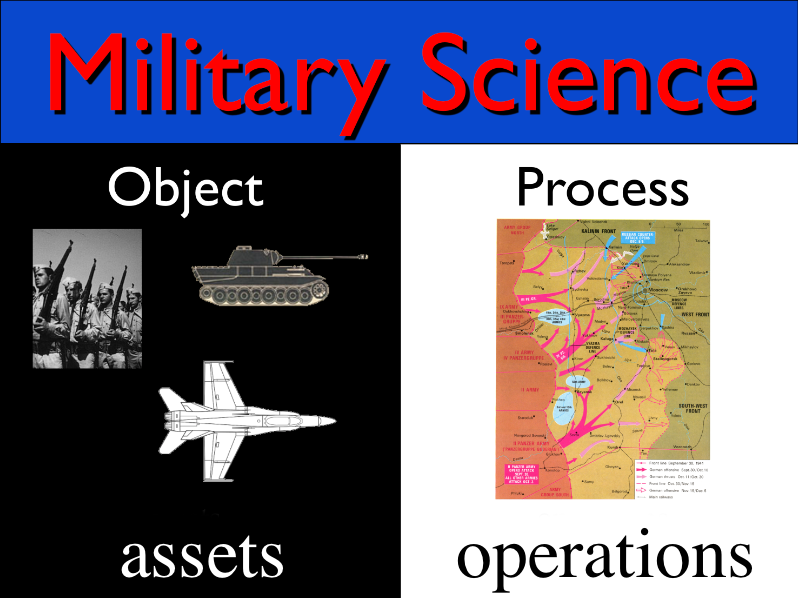
The Body
Once we know what we’re looking for, we can see the dichotomy between Object and Process everywhere. The most basic courses in the study of animals are anatomy and physiology. Anatomy is the study of all the different parts of the body—its objects. Physiology is the study of the many biochemical processes going on inside the body.
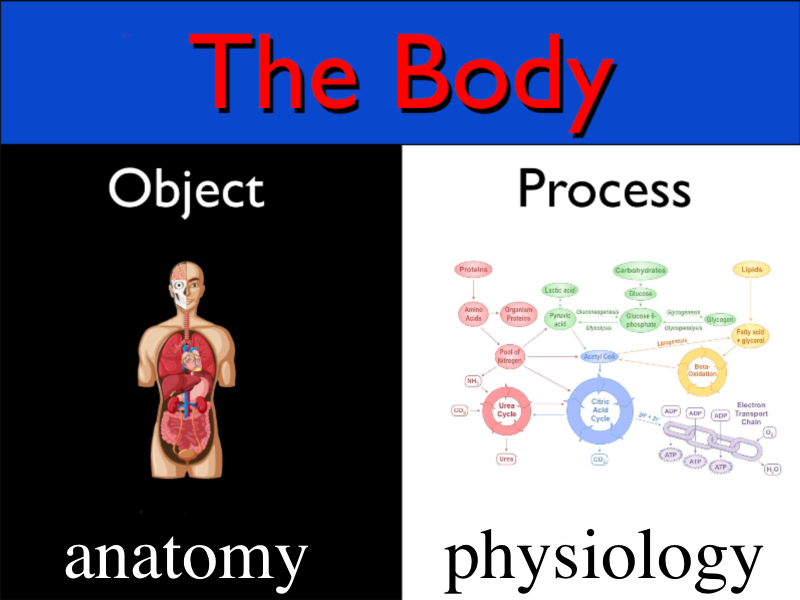
Space and Time
The dichotomy between Object and Process even shows up in our fundamental dimensions space and time. To measure is to know, and our measurements define our reality. We need objects to measure space, for without two objects to mark two locations in space, we cannot measure space. Similarly, we measure time with two events, which are the manifestations of processes. A universe with no objects would have no observable space, and a universe with no processes would have no observable time. An event is like a sentence: it combines a process with an object, as in “the second hand of the clock moved from :20 to :21”
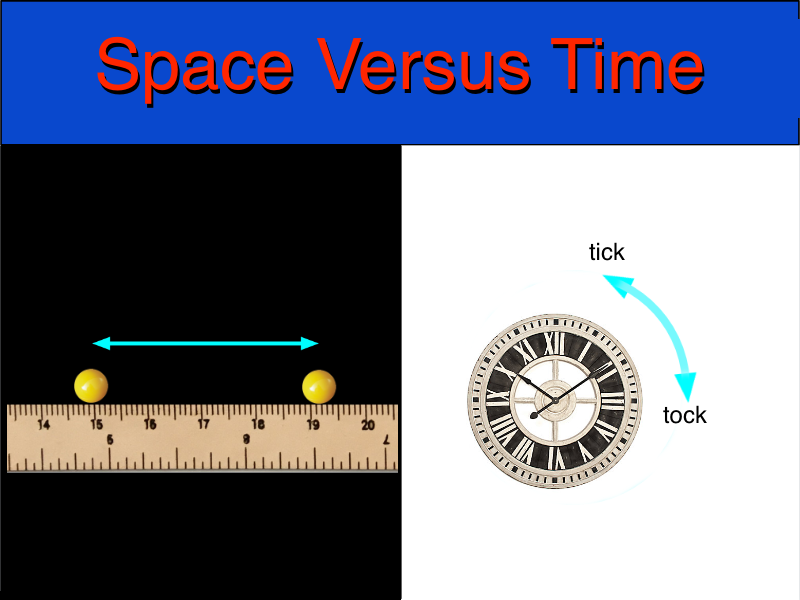
Thus, we can see the dichotomy between Object and Process all around us. Reality is indeed the union of both Object and Process.
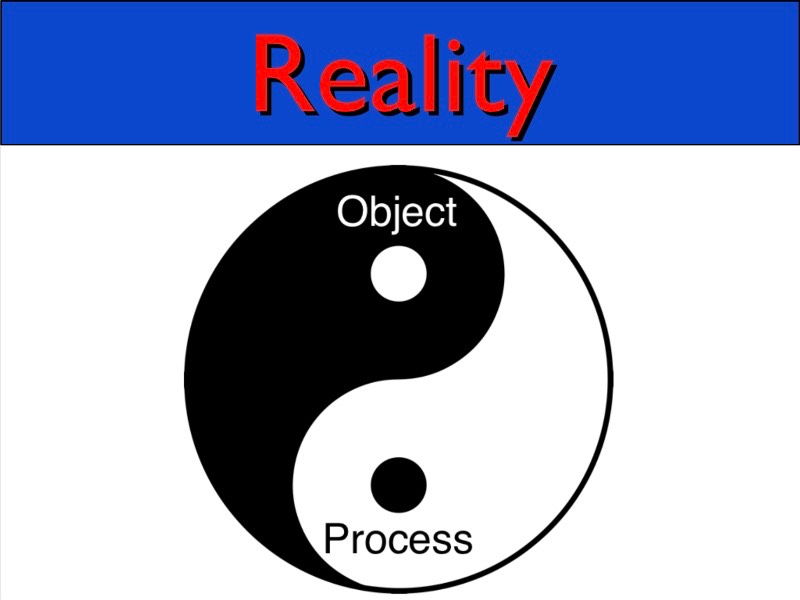
The Plot Twists
Having taken all this space convincing you of the dichotomy between Object and Process, I am now going to make a major revision: Object and Process and not opposites; they are two poles on a spectrum. The distinction between Object and Process is not black and white; it is gray.
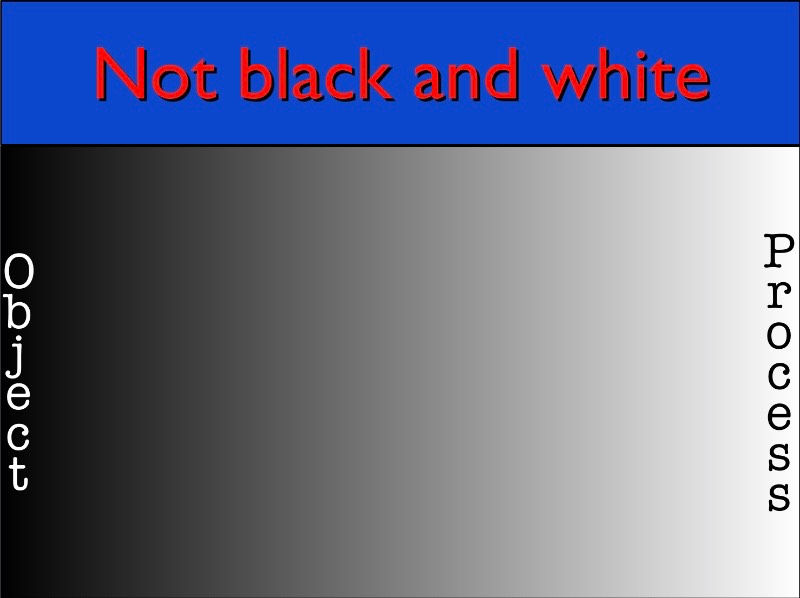
This is most starkly demonstrated in physics, where quantum mechanics showed that all particles can be described as waves, and all waves can be described as particles. In the early twentieth century there were lots of experiments showing the two-faced nature of reality. Electrons, which are particles, behaved like waves in some circumstances. And light, which is a wave, behaved like particles in some circumstances. Physicists resisted the implications of these findings, but eventually gave in and accepted that the universe is composed of “wavicles” — things that act like particles sometimes and act like waves sometimes.
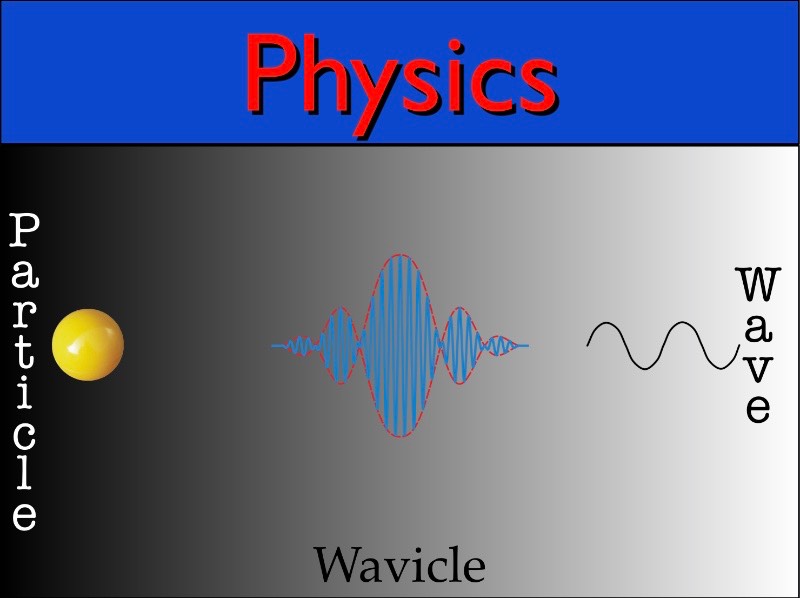
But we see the same kind of two-faced behavior in other areas. Let’s take linguistics. Sure, there are nouns and verbs, but what about gerunds? We have the verb “beat” but a “beating” is a noun. Or nouns that can become verbs, such as “ink”, as in “Executive inks contract”. And we have words that are simultaneously nouns and verbs, like “rain”.
It’s even easier to see in economics. Sure, there are goods and services, but what’s a good and what’s a service? If you buy a hamburger, are you purchasing two all-beef patties, sesame-seed bun, special sauce, lettuce, pickle, and onions? Or are you purchasing the service of serving you the hamburger, or assembling it, or cooking the meat, or transporting the meat to the restaurant, or raising the cattle? Is a hamburger a good or a service?
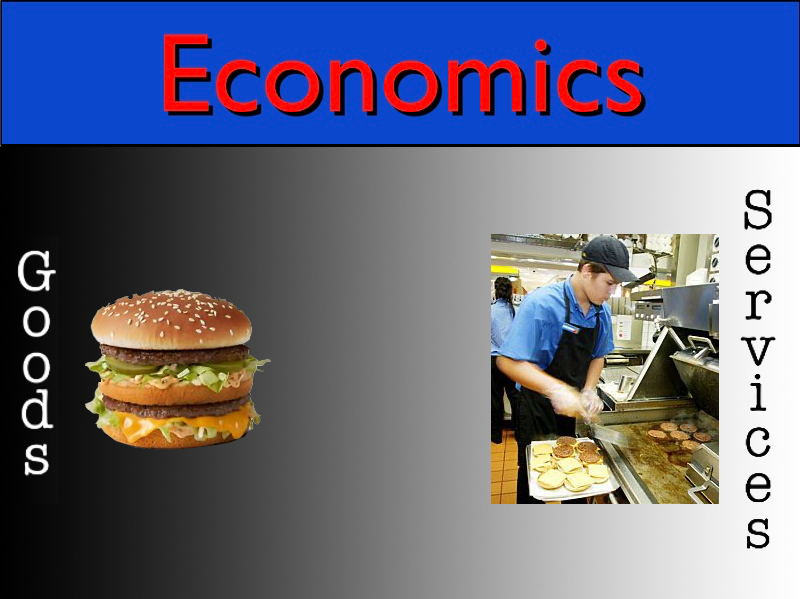
With computers, it is possible to carry out any calculation with a suitable algorithm (Process) or by using a huge data table (Object). The former saves memory, while the latter saves time. And a standard component of computer languages is the function, which is an algorithm (Process) that returns a number (Object). Inside the program, a function looks just like a number. So which is it: Object or Process?
In military science, it is a well-established that a highly mobile force that can zip all over the battle zone acts like a much larger force. In other words, lots of operations (Process) can have the same effect as lots of assets (Objects).
In linguistics, we find that nouns are often transformed into verbs, and vice versa:
Similarly, in the body, there’s a direct correspondence between the components of the body and their functions:
Object, Process, and Time
So what are Object and Process? How can they be understood if they mix together so freely? The answer has to do with how we measure the two in spacetime. An Object has definite spatial coordinates and indefinite temporal coordinates. In other words, we can specify the position an object in space quite precisely, but it can span huge expanses of time. The earth is nearly five billion years old, and will last for billions of years more. An Object persists until it is changed by a Process.
By contrast, Process has precise temporal coordinates but indefinite spatial coordinates. A Process has a definite beginning and ending, but it can take place almost anywhere. Processes are spatially indefinite. When a Process acts on an Object, we can specify the coordinates of the event both spatially and temporally, but the Process is not tied to the location of the event, while the Object is tied to that location.
Mount Vesuvius in Italy is at latitude 40°49’16.8”and longitude N 14°25'36.6”E; it is 4,200 feet high. That is how we specify an Object. It erupted on August 24th, 79 CE; that is how we specify a Process.
Our bias towards Object
Sadly, we humans think primarily in terms of Object, not Process. Consider your own appreciation of the various subjects presented above. When you think about economics, to what degree do you think in terms of goods (Object) and to what degree do you think of services (Process)? When you think about wars, don’t you think primarily in terms of soldiers, tanks, and airplanes, rather than operations? Isn’t astronomy to you more about stars and planets than about radiative transfer and gravitation? Is your appreciation of your body not about fingers and heart and brain instead of hormones and thermal regulation?
Indeed, in every field of human study, we learned about the Object before we learned about the Process. Economics started off worrying about goods; the role of services was recognized later. In physics, we started off by considering Objects: planets, pendula, balls rolling down planes, cannonballs flying through the air, and so forth. The study of waves did not start until several centuries later. In medical studies the Greek doctor Galen began by listing and describing the parts of the body — anatomy. Only 1400 years later did we begin studying how these parts actually worked — physiology.
We think in terms of Object because that’s what we see. Vision is our primary sense, and you can’t see Process; you can see only Object. For example, how do you perceive a tree:
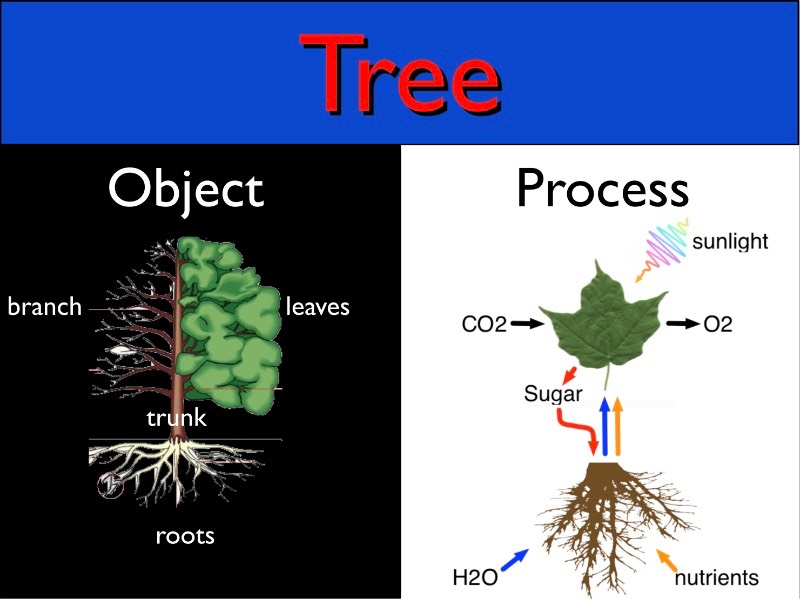
You perceive it in terms of what you can see — the Objects. You do not see it in terms of the Processes underway in the tree. In other words, you see a tree as a collection of Objects rather than a system of Processes. After all, that’s what your eyes tell you.
So what?
This all might seem like a great deal of intellectual gymnastics over an abstruse but ultimately meaningless point. Yet the difference between Object and Process lies at the heart of our failure to master the computer. Here’s my definition of interactivity:
Interaction is a cyclic process in which two agents alternately listen, think, and speak to each other.
Notice that magic word: process. The essence of interaction lies in Process, yet our thinking is preponderantly based on Object, not Process. The heart of the computer is the CPU: the Central PROCESSING Unit, yet we think of it in terms of the data, the hard drive, the screen, the mouse and keyboard, and hardly give a thought to the CPU. That’s why we have done such a poor job utilizing the computer as a medium of expression: we’re seeing the wrong things when we look at the computer. We must change, at a fundamental level, the way we think.
